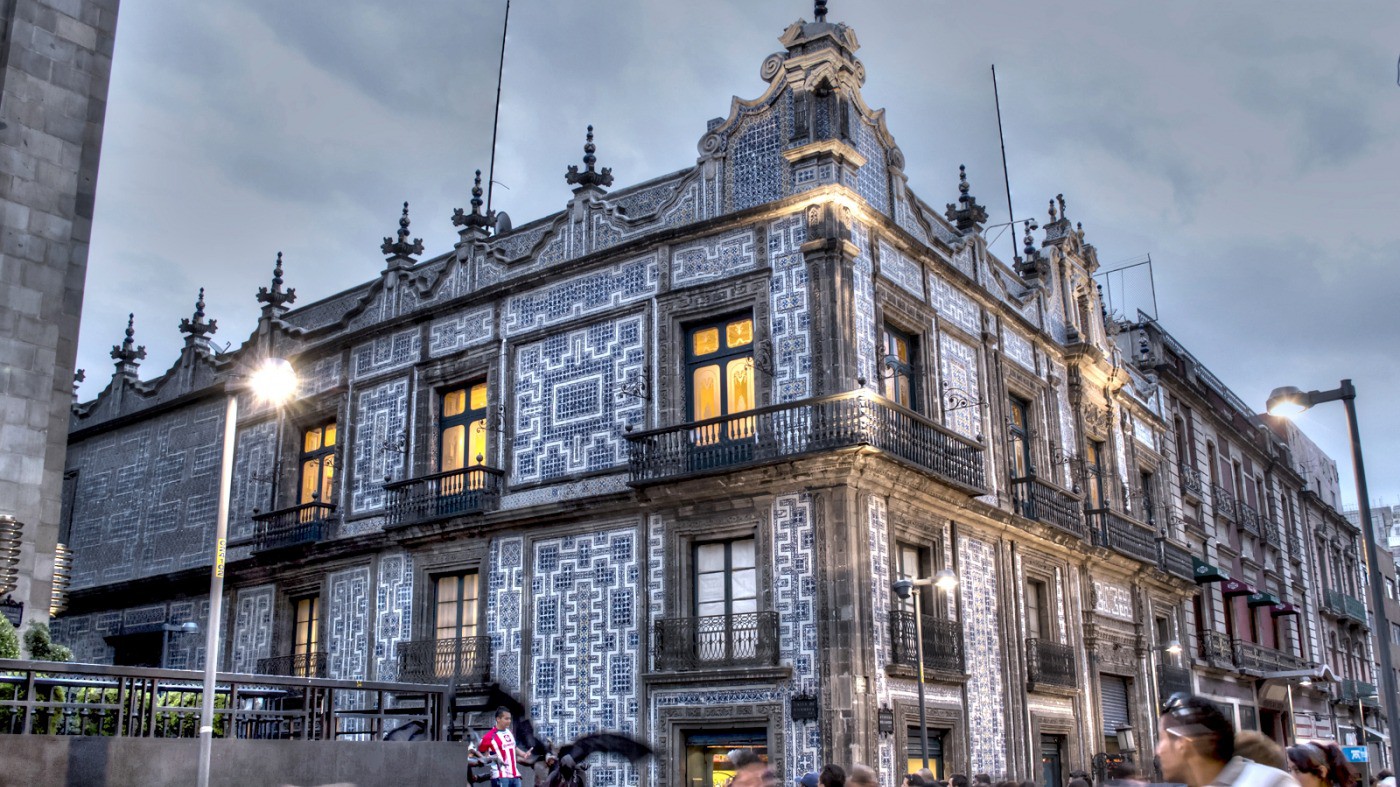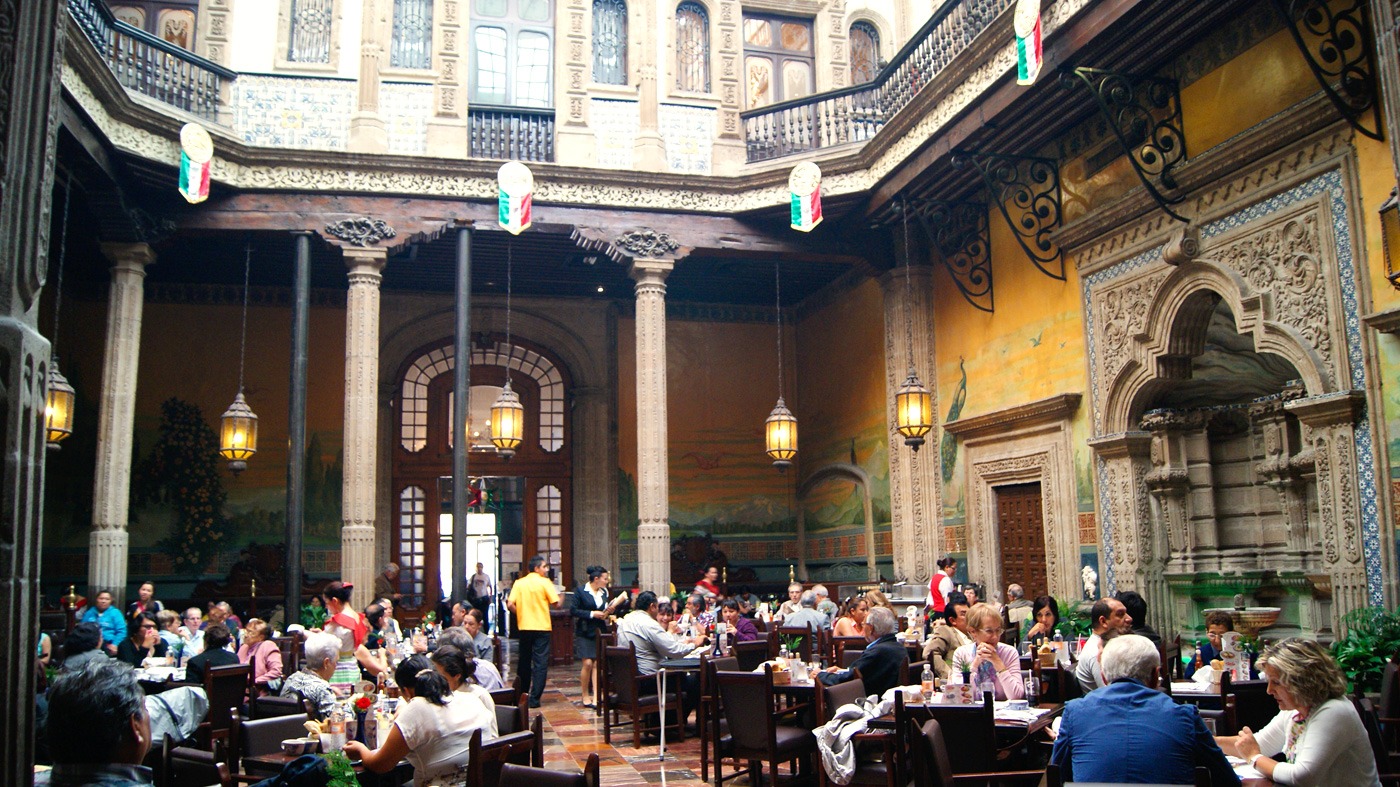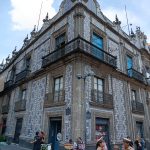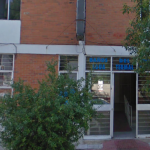


The Casa de los Azulejos, literally the “House of the Tiles” is one of Mexico City’s most dramatic and beautiful 18th-century residential palaces. And most fortunately, as it has been inhabited by Sanborns restaurant and department store since 1919, it’s also open to the public. Or at least, a very generous amount of it is easily view-able. For the uninitiated, Sanborns prices are also very reasonable and breakfast, lunch, or dinner here is probably something everyone should do at least once in a lifetime.
The remarkable palace’s address is actually the tiny Callejón de la Condesa, which runs just between 5 de Mayo and pedestrian-only Avenida Madero. It’s been one of the most important streets in the city since at least the 16th century.
Although an earlier Count del Valle de Orizaba owned the property with two houses on it earlier, the current building was begun in 1793. Remodeled sometime later, the addition of the blue and white tiles from Puebla was a sensation right from the beginning. Inside there are two noteworthy artworks. A peacock mural by the Romanian painter, Pacologue dating from 1919.
Perhaps even more beloved, one of José Clemente Orozco’s earliest works is in the stairwell. “Omniscience” was painted in 1925. And that’s just the painting. Inside and outside, visitors find a wealth of things to take in.
The Sanborns brothers from California opened their first soda fountain and drugstore on then-Calle Filomeno Mata (today it’s Calle Tacuba). They expanded to the Casa de Azulejos just a few years later. They took two years to remodel it, putting a stained-glass roof over the main courtyard, and continued expanding.
 The land was acquired by the Counts of the Valley of Orizaba. In 1653, the fifth countess rebuilt the palace to give it its present appearance. When the Avenida 5 de Mayo was widened in 1904, a new façade was added. In the main patio, the upper corridors are supported by tall and slender columns. A beautiful Baroque fountain stands out. In the stairway a tile baseboard is preserved. In the landing, the mural Omnisciencia was painted by José Clemente Orozco in 1925.
It was a steam baths, Jockey Club of the city, and the Casa del Obrero Mundial. When the patio was transformed into a central dining room, it was endowed with a mural by the Romanian painter, Pacologue, Since 1918, it has functioned as a pharmacy, soda fountain, and restaurant owned by Sanborns.
The land was acquired by the Counts of the Valley of Orizaba. In 1653, the fifth countess rebuilt the palace to give it its present appearance. When the Avenida 5 de Mayo was widened in 1904, a new façade was added. In the main patio, the upper corridors are supported by tall and slender columns. A beautiful Baroque fountain stands out. In the stairway a tile baseboard is preserved. In the landing, the mural Omnisciencia was painted by José Clemente Orozco in 1925.
It was a steam baths, Jockey Club of the city, and the Casa del Obrero Mundial. When the patio was transformed into a central dining room, it was endowed with a mural by the Romanian painter, Pacologue, Since 1918, it has functioned as a pharmacy, soda fountain, and restaurant owned by Sanborns.
Heart of México Walking Route: Alameda - Madero
< < Atrio y Templo de San Francisco | Palacio de Bellas Artes > >
Proyecto “Corredor de Cultura Digital”.
Nombre de la investigación: Investigación Centro Histórico, Monumentos, Edificios y Puntos de Interés (2023)
Dirección de investigación y diseño de Rutas: Acércate al Centro A.C. Guadalupe Gómez Collada
Coordinación e investigación histórica: Fideicomiso del Centro histórico Dir. Maestra Loredana Montes
Today, there are 125 Sanborns restaurants with the full attached department store and some 34 Sanborns Cafés. This particular restaurant was considered quite the elegant dining establishment for most of the first half of the 20th century, but today, you'll find it comfortable and a pleasant excuse for taking in one of Mexico City's true historical treasures. Hours: Daily, 7 a.m. to 1 a.m. +52 (55) 5512 1038
+52 (55) 5512 1038

Nearest at 0.04 kms.

Nearest at 0.05 kms.

Nearest at 0.05 kms.

One of Mexico City's classic neighborhood markets and meeting places . . .

A giant neighborhood market brings the surrounding streets to life . . .

Practically the Public Market for the Mexico City Airport...

The neighborhood church of one of the oldest neighborhoods in the east of Mexico City...

Mexico City's most famous and most medicinal public bathhouse...